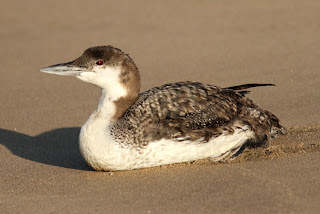This will be the first of several posts based on the excellent pelagics off Graciosa, Azores, this week. Wilson's Petrels are obviously a southern oceans breeding species, so it is no wonder given their breeding cycle to see birds in heavy wing moult. There were, of course, a couple of juvenile birds - really interesting to see how fresh they were in comparison to the adults (all photos here are of adults). There were a total of 12-15 Wilson's Petrels seen, all together feeding on our chum slick 18 miles southeast of Graciosa, in an area of shallow water (300 metres depth).



























